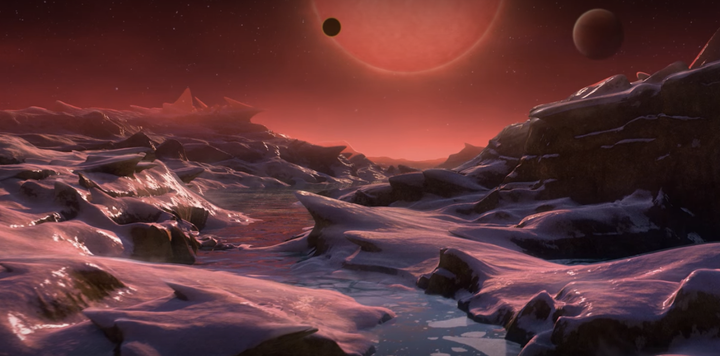Astronomers say three recently discovered planets similar to Earth's size and temperature may have conditions that could sustain life.
An international team observed the three planets orbiting a reddish, ultracool dwarf star, once thought too dim to anchor a solar system. Their research, published in the journal Nature on Monday, said these are the first planets ever seen orbiting an ultracool dwarf star.
"Systems around these tiny stars are the only places where we can detect life on an Earth-sized exoplanet with our current technology," co-author Michael Gillon, of the University of Liege in Belgium, said in a statement. "So if we want to find life elsewhere in the universe, this is where we should start to look."
Previously, scientists have only found exoplanets -- planets that do not orbit our sun -- with conditions unlike Earth's. In November, for instance, a rocky, Earth-sized planet was found 39 light years away, but its temperature was estimated at 300 degrees to 600 degrees. The discovery of the three potentially habitable planets may encourage researchers to look more closely at the huge numbers of ultracool dwarf stars.
The three planets orbit a star in the Aquarius constellations named Trappist-1, which is about the size of Jupiter. But the planets are close enough to the star to have "temperate" conditions on their surface, MIT researcher Julien De Wit told NPR.

The planets are about 40 light years from Earth -- making them nearby in galactic terms.
The nearness and their star's dimness will make it easier for scientists to study the exoplanets, which are often tough to analyze when orbiting a distant, bright star.
Each of the planets has a side that's perpetually in daylight and another side that's completely dark. The most likely region to support life would be along the line separating day and night, where temperatures would be less extreme, according to Gizmodo.
The nearest two planets complete their revolutions around the star in 1.5 days and 2.4 days. Scientists haven't completely charted the last planet's orbit, but it could take from 4.5 to 72.8 days.
Astronomers don't yet know what the planets are made of, and want to check for liquid water, the foundation for life.

Researchers may get further information about the atmospheric conditions after monitoring what happens to the star's light when the planets pass in front of it, according to The Verge. The presence of different gases on the planets will cause the light to behave differently.
The team used the Trappist telescope in Chile to study 60 stars too dim to see with the naked eye, according to Gizmodo. NASA's planned launch of the James Webb Space Telescope in 2018 could be useful, as one of its missions is to search for solar systems supporting life.
